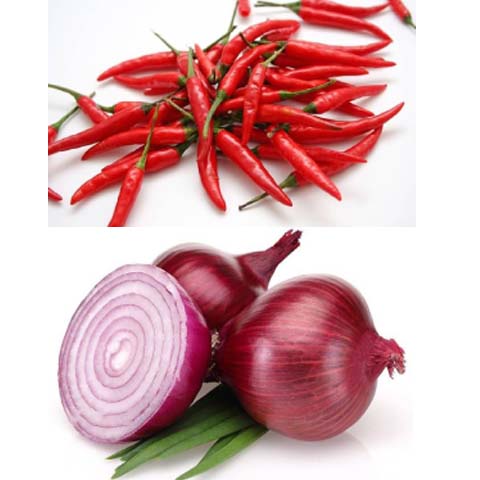
Have you ever eaten and felt that something is lacking? We all have. Food without spices and flavors is not something enjoyable. Whatever the culture and tradition, food is meant to be enjoyed together by family and friends. And further knowledge of the spices and flavors and its health-giving wonders can certainly add more enjoyment to our food and dishes.
Let me now bring you to the third installment of spices and flavors that heal.
Sibuyas or onions (Allium cepa L.). Onions contain cinnamic acid, caffeine acid, asafetida acid, mustard seed acid, polysaccharide A and B, quercetin, many varieties of amino acids, calcium, phosphorus, iron, riboflavin, vitamin C, volatile oils.
The odor in onion is because of organic sulfur compounds which are released when the bulb is cut or bruised.
A research study being done by Cornell University Medical School and the Chinese government has shown that in areas where onion and garlic production is high, they found the lowest rates of stomach cancers.
Diallyl sulfide, an organic sulfur compound, found in both onion and garlic, is now being investigated as a possible prevention for stomach cancer. It increases the production of the enzyme glutathione-S-transferase, which protects against cancer in the stomach.
The onion stalk contains vitamin A, thiamin and ascorbic acid.
In traditional medicine, onion contains the following properties: stimulant (increases or hastens body activity), diuretic (increases the amount of urine produced), expectorant (promotes ejection of fluid from lungs and trachea) and rubefacient (an external skin application causing redness of the skin).
Recommended medicinal use: For cough and colds: make an onion soup and drink while hot or tepid four to six times a day. Another preparation is to mix equal amounts of onion juice and honey. Take one teaspoon of the mixture every four hours.
For tooth disorders and toothache: Russian researchers have confirmed the bactericidal properties of onions especially for tooth disorders. Chewing raw onion for three minutes is sufficient to kill the harmful bacteria in the mouth. Toothache is remedied by placing a small piece of crushed onion in the bad tooth or gum.
For wounds, skin ulcers and boils: apply freshly crushed onion or its juice to the affected parts.
Siling labuyo or cayenne or bird’s eye chili (Capsicum frutescens L.). The fruits contain carotenoid lutein which is associated with a lower rate of age-related macular degeneration of the eyes.
Siling labuyo has also demonstrated antioxidant activity. They are good sources of ascorbic acid, beta carotene, vitamins A and B. They also contain citric acid, palmitic acid, oleoresin, volatile and fixed oils, pentosans and pectin.
The leaves are excellent sources of calcium, iron, vitamin B, potassium and vitamin A. They also contain saponin, tannin, fats and perioxidase.
Siling labuyo or hot red pepper contains the phytochemical capsaicin which is an anti-inflammatory. It is used topically for arthritis pain. It also suppresses cholesterol formation in the liver.
Recommended medicinal uses. For arthritis and rheumatism: crush fruit, mix with coconut oil and apply on affected part. For dyspepsia or indigestion: eat fruit as a condiment.
Solasi or sacred/holy basil (Ocimum sanctum L.). This herb is sacred to the Hindus. It releases its flavor only when cooked. The leaves and stems contain tannin, sulfur, fats, calcium oxalate, perioxidase and formic acid. They also contain methyl chavicol, cineole, linalool, methyl homoanisic acid, caryophyllene, eugenol, eugenol methyl ether and carvacrol.
Recommended medicinal uses. For fever and gas pain: take infusion of leaves as tea. For rheumatism: crush leaves and apply juice on affected parts. As an aromatic bath: use decoction of leaves.
Sweet basil or Balanoy. (Ocimum basilicum L.) Often eaten as a raw herb in Thailand and Vietnam, together with other herbs and vegetables and a spicy dip. The herb contains volatile oil like methyl chavicol, linalool, cireol-eugenol, pinene, ocimene, terpin hydrate, cineole, anethol, estragole, linalyl acetate and clove phenol.
Methyl chavicol, which is the main constituent of the oil, has been found to have mild germicidal action.
Recommended medicinal uses. For cough and gas pain: take infusion or decoction of the herb as tea. For insect bites and ringworm: apply the juice of crushed leaves on the affected parts. For skin ulcers: use decoction of the herb as a wash. For toothache: wet small piece of cotton with the juice of crushed leaves and insert into a tooth cavity.
